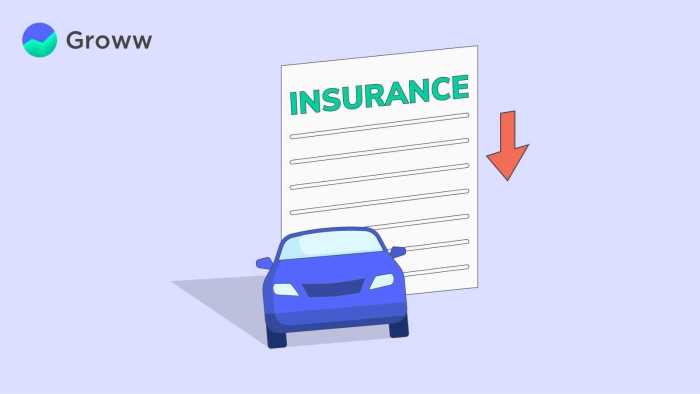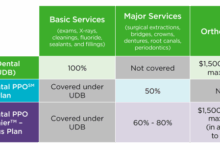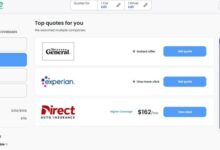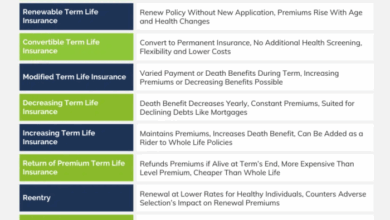How To Lower Your Car Insurance Premium Legally
Delving into How to Lower Your Car Insurance Premium Legally, it’s essential to understand that navigating car insurance can feel overwhelming, yet there are numerous legal strategies to reduce your costs. Whether you’re a new driver or have been behind the wheel for years, knowing how to manage your premiums can lead to significant savings.
From comprehending what affects insurance rates to leveraging discounts and making informed choices about vehicle selection, this guide is designed to equip you with actionable tips that can help you lower your car insurance premiums legally. Understanding the nuances of your policy and exploring various options will empower you to make the best decisions for your financial well-being.
Understanding Car Insurance Premiums
Car insurance premiums are the amounts you pay to your insurance provider in exchange for coverage on your vehicle. These premiums can vary significantly based on several factors. Understanding what comprises your premium and the elements that influence it can help you make informed decisions and potentially lower your costs.A car insurance premium typically consists of several components, including the base rate, risk factors, and additional coverage options.
The base rate is the starting point that insurers use to calculate your premium. This is often influenced by various risk factors such as your age, driving history, location, and the type of vehicle you drive. Premiums can also include costs related to the policies you select, such as comprehensive or collision coverage.
Factors Influencing Car Insurance Premiums
Several key factors can impact the cost of your car insurance premiums. Understanding these can aid in managing and potentially reducing them:
- Driving Record: A clean driving record with no accidents or traffic violations typically results in lower premiums. Conversely, a history of claims or infractions can increase your rate.
- Location: Where you live affects your risk profile. Urban areas with higher traffic densities often lead to increased premiums compared to rural areas.
- Vehicle Type: The make and model of your car play a significant role. Expensive cars or those with high repair costs usually incur higher premiums.
- Age and Gender: Younger drivers, especially males, tend to pay more due to lesser experience and statistically higher accident rates.
- Credit Score: Insurers often use credit scores to assess risk. A better credit score can lead to lower premiums.
- Coverage Options: The level of coverage you choose directly impacts your premium. Opting for more comprehensive coverage typically results in higher costs.
Difference Between Full Coverage and Liability Insurance
Understanding the distinction between full coverage and liability insurance is crucial for selecting the right policy for your needs. Full coverage insurance includes both liability coverage and additional protection, such as collision and comprehensive coverage. This means that in the event of an accident, your insurance will cover damages to your vehicle as well as any damages or injuries you may cause to others.
Particularly useful for newer or high-value cars, full coverage helps protect your investment from various risks including theft, vandalism, and natural disasters.On the other hand, liability insurance is the minimum required coverage in most states. It covers damages or injuries you cause to others in an accident but does not cover your own vehicle’s damages. This type of insurance is generally more affordable but leaves you exposed to potential financial losses if you cause an accident or if your car is damaged.
Understanding the nuances of your car insurance policy can significantly influence your premiums and overall financial protection.
Legal Ways to Lower Your Car Insurance Premium

Source: cribbinsurance.com
Lowering your car insurance premium legally is not only beneficial for your wallet but also a smart way to ensure you are getting the best value for your coverage. There are numerous strategies you can employ to reduce your premiums while still adhering to legal standards. This section will explore a few effective methods that can help you achieve significant savings on your car insurance.
Maintaining a Good Driving Record
A clean driving record is one of the most powerful tools at your disposal when it comes to reducing your car insurance premium. Insurance companies reward safe drivers with lower rates, as they are considered less likely to file claims. Here are some key points to understand about maintaining a good driving record:
- Insurance companies often offer discounts for drivers with no accidents or traffic violations over a certain period, usually three to five years.
- Minor infractions, such as speeding tickets, can lead to an increase in premiums, while major violations, like DUI, can significantly hike rates and even lead to policy cancellation.
- Many insurers provide rewards for completing defensive driving courses, which not only improve your skills but also qualify you for discounts.
Benefits of Bundling Insurance Policies
Bundling your car insurance with other policies, such as home or renters insurance, can lead to substantial savings. Insurance companies often provide discounts for customers who choose to purchase multiple policies from them. Here’s why bundling can be advantageous:
- Many insurers offer up to a 25% discount when you bundle policies, which can translate into significant savings.
- Having all your policies with one insurer simplifies management, as you will have a single point of contact for all your insurance needs.
- Bundled policies can provide broader coverage options and add-ons that might not be available if purchased separately.
Choosing a Higher Deductible
Opting for a higher deductible is another effective way to lower your car insurance premium. A deductible is the amount you pay out of pocket before your insurance kicks in for a claim. Here are some insights into how this can affect your premiums:
- Higher deductibles often lead to lower monthly premiums, allowing you to save money in the long run, especially if you are a safe driver.
- Evaluate your financial situation to ensure you can afford the higher deductible in the event of an accident or claim.
- Many drivers find that by raising their deductible, they can significantly reduce their premium costs while still maintaining essential coverage.
Discounts Available for Car Insurance

Source: groww.in
Car insurance can be a significant expense, but many insurance providers offer various discounts that can help lower your premium. Understanding these discounts can make a substantial difference in your monthly payments. By taking advantage of available discounts, you can save money while ensuring you have the coverage you need.Insurance companies typically provide a range of discounts based on different criteria, encouraging safe driving habits and responsible behavior.
Knowing what discounts you may qualify for can empower you to negotiate better rates with your provider. Here are some common discounts offered by insurance providers:
Common Discounts Offered by Insurance Providers
Insurance providers recognize various criteria that can lower your premium. These discounts may vary by company, but some common ones include:
- Safe Driver Discount: For drivers with a clean driving record free of accidents or violations.
- Multi-Policy Discount: If you bundle your car insurance with other policies such as home or life insurance.
- Good Student Discount: Available for students who maintain a certain GPA or are enrolled in full-time education.
- Low Mileage Discount: For drivers who use their vehicle infrequently or drive less than a specified number of miles annually.
- Vehicle Safety Features Discount: If your car is equipped with advanced safety features like anti-lock brakes, airbags, or anti-theft systems.
The criteria that typically qualify for these discounts can include maintaining a clean driving record, enrolling in specific educational programs, or owning vehicles that meet certain safety standards.
Defensive Driving Course Advantages
Taking a defensive driving course is a great way to not only improve your driving skills but also to potentially earn discounts on your car insurance. Many insurers provide a discount for drivers who complete an approved course, as it demonstrates a commitment to safe driving practices.In addition to lowering your premium, completing a defensive driving course can lead to enhanced confidence behind the wheel.
It teaches skills such as hazard recognition, emergency response techniques, and effective communication with other drivers. This can result in fewer accidents and claims, ultimately benefiting both you and your insurer.To summarize the advantages, here are some key points regarding defensive driving courses:
- Cost-Effective: The savings from the insurance discount often outweighs the cost of the course.
- Improved Driving Skills: Gain knowledge of road safety and defensive driving techniques.
- Accident Reduction: Safer driving can lead to fewer accidents and claims over time.
- Potential for Additional Discounts: Some states offer further incentives for completing these courses beyond just insurance savings.
By enrolling in a defensive driving course, you not only contribute to a safer driving environment but also enjoy financial benefits through discounts on your car insurance premium.
Shopping Around for Insurance
When it comes to car insurance, one of the most effective ways to save money is by shopping around for the best rates. The insurance market is highly competitive, and taking the time to compare quotes from different insurers can lead to significant savings. In this section, we’ll explore how to effectively compare insurance quotes and the importance of understanding the details of your policy before making a purchase.
Importance of Comparing Quotes
Comparing quotes from various insurance providers is crucial for several reasons. First, rates can vary widely between companies for similar coverage. Factors such as your driving history, the type of vehicle you own, and even your location can influence the premiums offered by different insurers. By obtaining quotes from multiple sources, you can identify which companies offer the most competitive rates for your specific situation.
It’s advisable to start by gathering at least three to five quotes to ensure a well-rounded view of the market. Each quote should include comparable coverage levels and deductibles to make an accurate assessment. This approach not only helps you find the best price but also gives insight into which companies offer discounts or other benefits that can further lower your overall costs.
Using Online Tools for Insurance Comparison
In today’s digital age, online tools are invaluable for comparing insurance quotes effectively. Numerous websites allow users to input their information and receive quotes from multiple insurers within minutes. These platforms often provide user-friendly interfaces and filters to help you customize your search based on coverage needs, budget, and other preferences.When using these tools, it’s essential to ensure that the platforms you choose are reputable and secure.
Look for sites that are well-established and have positive user feedback. Also, make a note of any additional features these tools may offer, such as customer reviews or ratings of insurance companies, which can provide deeper insights into the services you might receive.
“Shopping around for insurance can save you hundreds of dollars annually.”
Understanding Policy Details Before Purchasing
Before finalizing any insurance purchase, comprehensively understanding the policy details is crucial. It’s not just about the premium; the terms and conditions of coverage can significantly impact your overall satisfaction and financial protection when a claim arises.Key areas to focus on include:
- Coverage Limits: Know the maximum amount the insurer will pay for different types of claims. This will help you gauge if your policy meets your needs.
- Deductibles: Understand how much you will need to pay out-of-pocket before insurance kicks in. A lower premium often comes with higher deductibles.
- Exclusions: Familiarize yourself with what is not covered under your policy. This can prevent surprises when filing a claim.
- Additional Benefits: Look for perks like roadside assistance or rental car reimbursement that can add value to your policy.
Reading through your policy and asking questions about anything that is unclear can save you from potential headaches down the line. Taking these steps ensures you choose a policy that not only fits your budget but also provides the protection you need on the road.
Improving Your Credit Score
Credit scores play a critical role in determining your car insurance premiums. Insurers assess the likelihood of you filing a claim based on your credit history, which can significantly impact your rates. A higher credit score often correlates with lower risk in the eyes of insurers, leading to reduced premiums.Insurance companies frequently use credit scores as part of their underwriting process.
This means that individuals with poor credit histories may face higher insurance costs compared to those with good or excellent credit. Insurers believe that a solid credit score reflects responsible financial behavior, which can correlate with safer driving habits.
Maintaining or Improving a Credit Score
To ensure you maintain or improve your credit score, it’s essential to adopt sound financial habits. Here are several methods to enhance your creditworthiness:
- Pay bills on time: Timely payments significantly impact your credit score. Setting up automatic payments or reminders can help you stay on track.
- Reduce credit card balances: Keeping your credit utilization low (ideally under 30% of your total credit limit) can positively influence your score.
- Establish a mix of credit types: Having a mix of revolving and installment credit, such as credit cards and loans, can benefit your score.
- Limit new credit applications: Each application can result in a hard inquiry, which may temporarily lower your score.
Limit applications to only when necessary. - Regularly check your credit report: Monitoring your credit report for errors and disputing inaccuracies can help maintain a healthy score.
Improving your credit score is a gradual process, but the long-term benefits can lead to significant savings on your car insurance premiums.
Credit History and Perceived Risk
The relationship between credit history and perceived risk by insurers is foundational in the industry. Insurers analyze credit profiles to gauge how likely a policyholder is to file claims. A history of missed payments or defaults can label a driver as high-risk, thus increasing premiums.
“Individuals with a higher credit score are statistically less likely to file insurance claims.”
To illustrate this connection, a person with a credit score of 750 may receive a much lower premium than someone with a score of 550, reflecting the perceived stability and reliability of the higher-scoring individual. Insurers believe that those with better credit are more responsible in all aspects of their financial lives, including driving behavior.By focusing on improving your credit score, you can directly influence your insurance costs, ultimately saving you money while maintaining coverage that suits your needs.
Vehicle Selection and Its Impact on Premiums
Choosing the right vehicle is a crucial factor when it comes to determining your car insurance premiums. Different types of vehicles can significantly affect your costs, with various attributes influencing how insurance companies assess risk. Understanding these nuances can help you make informed decisions about your vehicle purchase, potentially leading to lower premiums.The make and model of your vehicle can have a dramatic impact on your insurance costs.
Generally, sports cars or luxury vehicles tend to have higher premiums due to their higher likelihood of theft and the increased costs of repairs. In contrast, sedans and family-friendly SUVs often come with more manageable insurance rates. Insurance companies use data to assess risk, and vehicles that are frequently involved in accidents or have a reputation for causing damage can lead to elevated premiums.
Comparison of Insurance Costs for Different Types of Vehicles
When comparing vehicle types, it’s essential to consider not only the purchase price but also the associated insurance costs. High-performance cars, for instance, may offer thrilling driving experiences but tend to attract higher premiums. Conversely, traditional vehicles with lower horsepower and fewer performance features often result in more budget-friendly insurance. Consider the following points:
- Sports Cars: Typically, these vehicles have high insurance premiums due to their speed and performance capabilities.
- Luxury Vehicles: The costs for repairs and replacement parts can lead to increased premiums.
- Minivans and SUVs: Generally viewed as safer and less likely to be involved in severe accidents, they often carry lower premiums.
- Compact Cars: These vehicles frequently have lower premiums due to their affordability and low theft rates.
Impact of Safety Ratings and Features on Premiums
Safety ratings play a crucial role in how much you pay for insurance. Vehicles that score well on safety tests are often rewarded with lower premiums. Insurance companies appreciate features like anti-lock brakes, airbags, and electronic stability control, as these can reduce the likelihood of accidents and injuries.Several safety features can influence your premium rates:
- Advanced Driver Assistance Systems (ADAS): Features such as lane departure warning and automatic emergency braking can lead to lower premiums.
- Crash Test Ratings: Vehicles with higher ratings in crash tests tend to be cheaper to insure.
- Occupant Safety: Cars designed with enhanced protection for occupants can lower risks and consequently premiums.
Advantages of Insuring a Vehicle with Anti-Theft Devices
Insuring a vehicle equipped with anti-theft devices can significantly reduce your car insurance premiums. Insurance companies recognize that these devices lower the risk of theft and are willing to pass on those savings to you. Consider these advantages of having anti-theft features:
- Lower Risk of Theft: Vehicles with anti-theft systems are less likely to be stolen, leading to lower premiums.
- Discounts: Many insurers offer specific discounts for vehicles equipped with approved anti-theft devices.
- Enhanced Security: These devices can deter thieves, further decreasing the chances of loss.
Utilizing State-Specific Programs
Many states offer programs designed to help residents reduce their car insurance premiums. These initiatives can vary greatly depending on the state but often provide tailored assistance for low-income individuals, safe drivers, or those participating in certain educational programs. Understanding and leveraging these state-specific programs can lead to significant savings on your car insurance.State programs can assist in lowering your insurance costs through various discounts and assistance options.
To take advantage of these programs, it’s essential to know what is available in your state and how to apply. Many states offer discounts for safe driving courses, low-income assistance, and programs aimed at reducing the number of uninsured drivers on the road.
Examples of State Programs for Car Insurance Savings
Several states have notable programs that provide financial relief for car insurance costs. Here are some examples of these programs:
- California: The California Low-Cost Automobile Insurance Program offers discounted rates for low-income drivers. Eligible individuals can pay as little as $360 per year for liability coverage. To apply, individuals must meet specific income requirements and provide necessary documentation.
- Florida: The Florida Department of Financial Services runs the “Florida Discount Program,” providing discounts for drivers who complete defensive driving courses. This not only enhances road safety but also reduces premiums for participants.
- New Jersey: New Jersey offers a “Good Driver” discount, which provides a significant reduction for drivers who maintain a clean driving record for a number of years. Eligible drivers must apply through their insurance provider and prove their driving history.
- Texas: The Texas Automobile Insurance Plan Association administers a program for drivers who may have difficulty obtaining insurance due to a poor driving record. This program offers access to insurance at reasonable rates.
Understanding how to access these programs can maximize your savings. Applying for state-specific discounts often involves filling out an application form, providing income documentation or proof of completion for required courses, and sometimes submitting specific identification information. Each state may have a different process, so it’s essential to check the state’s insurance department website for guidelines and resources.
Regular Policy Review and Adjustments
Regularly reviewing your car insurance policy is essential to ensure you’re getting the best coverage at the most competitive rates. An annual check-in not only helps identify any changes in your circumstances that may affect your insurance needs but also allows you to take advantage of potential savings. Insurers frequently update their offerings and discounts, which you might miss without a policy review.Evaluating your insurance policy involves more than just checking your premium.
It’s crucial to consider changes in your life that can influence your coverage requirements. Key life events, such as marriage or moving to a new location, can alter your risk profile and hence your premium.
Negotiating Better Rates with Insurers
Negotiating with your insurance company can lead to better rates and improved coverage. Here are some effective strategies to consider when discussing your policy with insurers:
- Gather Quotes: Before calling your insurer, research and gather quotes from other companies. This will give you a solid benchmark and leverage in negotiations.
- Request Discounts: Inquire about available discounts that you may not be taking advantage of, such as multi-policy discounts, safe driver discounts, or low-mileage discounts.
- Assess Coverage Needs: Review your current coverage and identify any areas where you may be over-insured or under-insured. Adjusting these can result in premium savings.
- Be Persistent: Don’t hesitate to ask for better rates or discounts multiple times. Sometimes, simply expressing your loyalty can yield extra savings.
Impact of Life Changes on Insurance Needs
Life changes significantly affect your car insurance needs. Each event can necessitate a policy adjustment to maintain adequate coverage. Here are some common life events and their implications:
- Marriage: Combining policies with a spouse can lead to discounts, while also potentially adjusting coverage limits based on your joint risk factors.
- Moving: Changing your address can alter risk profiles due to crime rates, traffic patterns, and weather conditions in different locations.
- New Job: A change in your daily commute can affect your mileage and risk exposure, warranting a reassessment of your premium.
- Adding a Driver: Including a new driver on your policy, especially a young or inexperienced one, can increase premiums but may also allow for opportunities for discounts.
Regularly reviewing and adjusting your car insurance policy can lead to significant savings and better coverage tailored to your current lifestyle.
Ultimate Conclusion

Source: firstcitizens.com
In summary, lowering your car insurance premiums legally is not just about finding the cheapest rate; it’s about being informed and proactive in your approach. By maintaining a good driving record, shopping around for the best deals, and utilizing available discounts, you can ensure you’re not only compliant but also financially savvy. The journey to affordable car insurance is achievable with the right knowledge and strategies in place.
Clarifying Questions
What is a car insurance premium?
A car insurance premium is the amount you pay to an insurance company for coverage, which can vary based on multiple factors including your driving history and vehicle type.
How often should I review my car insurance policy?
It’s advisable to review your car insurance policy at least once a year or after significant life changes to ensure you have the best coverage and rates.
Can I negotiate my car insurance premium?
Yes, many insurance providers are open to negotiation, especially if you present a good driving record or competitive quotes from other companies.
Does my credit score really affect my insurance rates?
Yes, many insurers consider credit scores when determining rates, as they believe a higher score indicates a lower risk of filing claims.
What types of vehicles are usually cheaper to insure?
Generally, vehicles with high safety ratings and anti-theft features tend to have lower insurance premiums.
Are there state-specific programs that can help reduce my premium?
Yes, many states offer programs designed to assist drivers in lowering their insurance costs, often tied to safe driving courses or low-income assistance.









